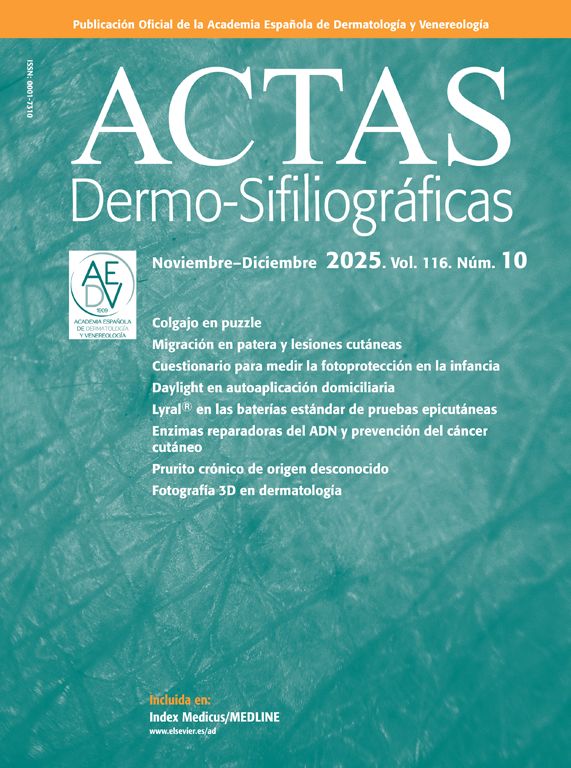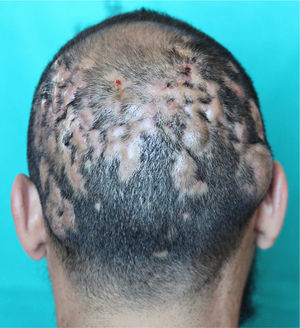A 38-year-old Caucasian male presented to our department with 8 months of progressive painful subcutaneous nodules and abscesses in occipital scalp that caused numerous areas of alopecia (Figure 1). He had received treatment with isotretinoin due to acne conglobata two years back. Skin-biopsy specimen revealed a deep, chronic inflammatory infiltrate affecting the inferior portion of hair follicles. PAS, Groccott and Ziehl-Nieelsen stains were negative. Bacterial, mycobacterial and mycotic biopsy cultures were also negative. Thus, dissecting cellulitis of the scalp was diagnosed. This pathology is defined as a chronic suppurative dermatosis of the scalp; it is more frequent in young afro-descendant males; originating from follicular occlusion that causes progressive communicating abscesses that dissect the scalp, resulting in areas of scarring alopecia. Trichoscopy is also an useful diagnostic tool in dissecting cellulitis, showing yellow, structureless areas and yellow dots with “3D” structure imposed over dystrophic hair shafts as most characteristic findings. The patient began treatment with oral isotretinoin 0.7mg/kg/day and therapy was maintained for 6 months with adequate control of the disease after 2 months of treatment.
The Impact Factor measures the average number of citations received in a particular year by papers published in the journal during the two preceding years.
© Clarivate Analytics, Journal Citation Reports 2025
SRJ is a prestige metric based on the idea that not all citations are the same. SJR uses a similar algorithm as the Google page rank; it provides a quantitative and qualitative measure of the journal's impact.
See moreSNIP measures contextual citation impact by wighting citations based on the total number of citations in a subject field.
See more




